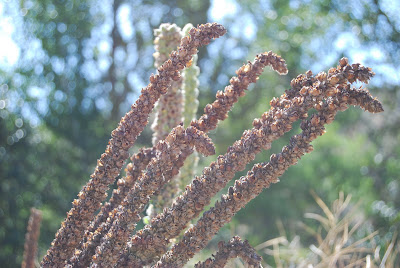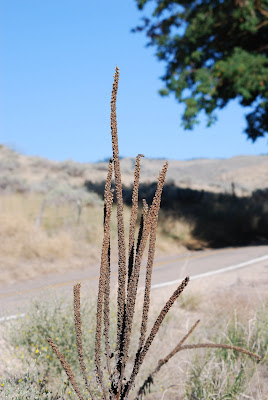


On July 19th, 2003, lightning ignited a fire on Cramer Creek, in the Salmon River Breaks of Idaho, on an impossibly steep grassy mountain, and a tragedy was in the making, as a series of small mistakes turned to disaster. The fire was discovered the next day and the shuttle of firefighters by helicopter began that afternoon, to the high ridges near the fire. The flames continued to eat away at the grass and brush on the steep mountain side and 200 acres were burning by the next evening.
There are places in the Rocky Mountains and other ranges in the world, that are almost impenetrable, due to the steepness and ruggedness of the country and the density of the trees and brush. This type of massif demands respect, and can only be ignored at your own peril. The landscape dominates the movement of animals and people, and trails intertwine and overlap, or there are no trails, just scrambles and technical traverses for the likes of mountain climbers. And mountain goats and bighorn sheep. Or you best not travel those slopes at all, unless you want to risk a fall or get bashed by numerous flying, tumbling and rolling rocks.
The Salmon River Mountains, located in central Idaho, are such a place. The Salmon River on its course to the Snake River cuts a deep canyon through rugged mountains dodging lofty peaks, and granite fortified ridges. The gorge of the Salmon is around 3,000 feet elevation and the peaks surrounding it are 8,000 to 9,000 feet in height, all in the space of around three or four miles. A hike from the river bottom to the summits is a gut wrenching, mind numbing experience with a full pack. Or even an empty one.
The Salmon River, also known as the River of No Return, originates in the snowfields and peaks of the Sawtooth and White Cloud mountains and flows a tortuous course to the north, until it reaches North Fork, Idaho, where the river turns abruptly and flows in a westerly direction. This area is generally known as the Salmon River Breaks or the Salmon Mountains. The lower slopes of these mountains are covered with grass and brush, which grades into timber as you climb in elevation. Spruce, pine, fir. The famous or maybe infamous Salmon River Breaks, is known as big fire country because fires spread so rapidly and the terrain is impossibly steep, rocky and remote. And deadly at times. River of No Return, indeed.
There have been many conflicts in this remote corner of the Rocky Mountains, between man and the mountains and all its elements of water, rock, ice, snow, avalanches, and fire. Explorers, warriors, mountain men, miners, river rafters and firefighters have tested their mettle in this wondrous land; tragedy and drama are no strangers.
My first experience in the Salmon River Breaks, was with a fire team on a wildland fire, located just north of the river. I drove the dirt road from North Fork to Shoup, Idaho, and the track narrowed the farther east I went and mountains seemed to push hard at the river, the granite flanks of the ridges literally diving into the waves. The fire assignment turned out to be a short one, but the chance to explore parts of the Salmon River Breaks, shall not be forgotten.
The Salmon River appeared like a silver ribbon enclosed in gray rock, with a wedge shaped piece of blue sky peaking through a gaping maw. The abyss is incredibly narrow and deep, leaving a fissure, or tear in the sky. The Salmon River does not surrender easily and fights back and roars at the rock, cliffs, and tangles of boulders and the waters tumble, roll, spray and froth with white. The rumble of rocks rolling on the river bottom and punching at banks and boulders is a symphony that drowns out all other sounds, and the sight of water rounded stones from ancient floods indicates the timeless power of the Salmon. The whitewater rapids rumble, crash, growl, snarl, and howl, in one of natures biggest shindigs.
On August 12th, 1805 the Lewis and Clark expedition entered uncharted territory into what is now Idaho, after crossing over Lemhi Pass, and Captain William Clark, for the first time, camped on waters that flowed into the Pacific Ocean. They were ecstatic to have finally reached this point on their long journey, but were soon dismayed to look out to the west and see one high mountain range after another.
The next day they traveled over rolling hills to the main Salmon River, where they encountered the Shoshone Indians for the first time. The Shoshones possessed horses which the expedition badly needed, to carry their cargo and trade goods, and trying to cross the mountains without these beasts of burden would have been nearly impossible.
The second part of their mission was to see if there was a water route they could take to the Columbia River by canoe. The Shoshones provided them with a guide and Clark and 3 men traveled another 40 some miles down the Salmon River and on August 23rd camped on Squaw Creek above the main Salmon River about 4 miles west of Shoup, Idaho.
Clark wrote in his journal:
August 23, 1805 "We Set out early proceed on with great dificuelty as rocks were So sharp large and unsettled and the hill sides Steep that the horses could with the greatest risque and dificulty get on .." .... below my guide and maney other Indians tell me that the Mountains Close and is a perpendicular Clift on each Side, and Continues for a great distance and that the water runs with great violence from one rock to the other on each Side foaming & roreing thro rocks in every direction, So as to render the passage of any thing impossible. those rapids which I had Seen he said was Small and trifleing in comparison to the rocks and rapids below......" The Shoshone guide indicated there was a better route, which traveled north to the Bitterroot Valley, and heeding that advice, Captain Clark sent a messenger back to Captain Lewis, telling him there was no passage down the Salmon River. Clark and his men retreated back up the Salmon River and on August 27th they met up with the main expedition and Lewis. They charted a new course up the North Fork of the Salmon River, and started the tortuous climb into Bitterroot Mountains to Lost Trail Pass.
The Lewis and Clark expedition, with the help of the Shoshone's, evaluated the risks of traversing the Salmon River and made a good decision, to retreat to the north. They had met their match in the Salmon River Breaks and the mountains had won, and it was to rugged for even the likes of seasoned Indian guides and their ponies and mountain men.
During the journey across Lost Trail Pass, Clark Writes in his journal:
Sept. 3rd, 1805. "....hills high & rocky on each Side, in the after part of the day the high mountains closed the the Creek on each Side and obliged us to take on the Steep Mountains, So steep that the horses Could Screcly keep from Slipping down, Several Sliped & Injured themselves....."
There are many lessons to be learned from the experiences of Lewis & Clark and the Shoshone Indians, for those that cared to listen. In August of 1985 hundreds of firefighters would encamp in the Salmon River Mountains, to fight dozens of lightning ignited fires.
One of those blazes was the Butte Fire which was 10 miles, as the crow flies, from Squaw Creek drainage on the Salmon River where William Clark and his party turned back in 1805, due to the ruggedness of the country. On the afternoon August 29th, 1985, a crown fire run boiled up in Owl Creek and Wallace Creek and the fire lunged to the north towards the ridge top, at Tin Cup Hill, where hundreds of fire fighters were constructing control lines. 118 firefighters were entrapped on that remote mountain and surrounded by a firestorm, that roared like 100 freight trains and burned for hours with multiple flaming fronts. 78 of those firefighters used their fire shelters to escape the heat and smoke and all survived, huddled on a mountain 10 miles from the cool waters of the Salmon River. There was considerable drama that day but none of it ended in a tragedy, but it goes down in the history books as one of the biggest fire entrapment's ever. The Salmon River Breaks and its seemingly invincible ridges and thick timber, won the day and thoroughly rejected, trounced, thrashed and routed the firefighters and forced them into full retreat.
And the story does not end on Tin Cup Hill. In July 19th of 2003 a lightning fire started on Cramer Creek, 4 major drainage's to the west from where the Butte Fire occurred in 1985. A contingent of firefighters was sent to fight a fire, on yet another ridiculously steep, rugged and rocky mountain in the Salmon River Breaks. It was a perfect furnace, like a huge wood stove with its mouth at the cool waters of the Salmon River at 3100 feet and a mountain above at nearly 8,000 feet, forming a stove pipe that reached for the sky. A 5,000 foot tall furnace a couple of miles long and a mile wide, stoked with extremely dry grass, brush and timber. Into that pyre walked a few dozen firefighters, and two never returned. Heroes to us all.
The Cramer Fire occurred about 22 miles downriver from the location in 1805 where William Clark started his retreat back to the east and north. Clark made the determination, with the advice of the Shoshone Indians, that neither horse nor canoe could safely traverse this area.
The Butte Fire, the Cramer Fire, and the path of Clark William intersect within a triangle of mountains, in an area I call the Granite Triangle. The triangle is formed by drawing a line from the Shoup, Idaho northwest to Tin Cup Hill, then connecting that line to Long Tom Mountain, with the Salmon River forming the bottom. In this region the historic footsteps and helicopter flights of firefighter and explorers merge and cross, which is no accident. The mountains are guarded by some of the steepest and rugged slopes in the world, nearly unconquerable, and a river that has to knife its way down a wedge of canyon, and literally fight its way through boulders and around rock ledges.
On Sept, 3rd, 1805 Clark wrote in his journal:
"
..This day we passed over emence hils and Some of the worst roade that ever horses passed our horses frequently fell....."Over the years I worked on many forest fires in the Salmon River Breaks and the beauty and ruggedness of this region, always continues to amaze me. It's a special treat to see the wildlife, especially the sight of bighorn sheep clambering across rock slides with their exquisite camouflage, the same grayish color as the granite boulders. My path has crossed the Lewis & Clark and Shoshone Indian trails many times, and roads and trace of historic fires.
On a summer night above the Salmon River, somewhere near Owl Creek, you might hear, if you listen real hard, the chatter of firefighters on a nearby hill and the whine of chainsaws, the whinny of a horse, the sound of drums, or a desperate transmission over a two way radio, or the fleeting movement of a line of horses and buckskin clad men on a far ridge. Or maybe its just a rock or log tumbling down the hill, or an owl hooting, a wolf howling, the rumble of whitewater, the wind in the trees and sweeping over granite ledges, or a herd of elk running single file down a ridge. Echos and shadows of Indians, woodsmen and explorers.







































